Families Belong Together
DATE: June 21, 2018
A deluge of people who study and work with families, many of them among Council on Contemporary Families members, have joined scholars in other organizations (such as the American Psychological Association, Physicians for Human Rights, the American Anthropological Association and others listed here) to express concern and alarm about the family separation policy. We are sharing a statement on behalf of the 926 cosigning family scholars around the country.
Family Scholars and Experts Statement of Opposition to Policy of Separating Immigrant Families
We write as family scholars and experts to express our opposition to the Trump Administration policy of separating immigrant parents and children at the border as they enter the United States to seek refuge. This practice is an inhumane mistreatment of those seeking refuge from danger or persecution, and goes against international law. As scholars and experts devoted to identifying and sharing information relevant to policies to improve individual and family wellbeing, we deplore the Administration’s callous disregard of the overwhelming scientific information demonstrating the harm of separating children from their parents. This practice is known to be extremely traumatic for dependent children who stand a strong likelihood of experiencing lasting negative consequences from the sudden and inexplicable loss of their caregiver. Government should only separate children from their parents as a last resort when children are in danger of imminent harm. We urge the Administration to reconsider and reverse this policy.
Eileen Mazur Abel
Leisy Abrego, University of California Los Angeles
Dolores Acevedo-Garcia, Brandeis University
Katie Acosta, Georgia State University
Luke Adams, LMFT
Britni L. Adams, University of California Irvine
Fenaba Addo
Sarah Adeyinka-Skold, University of Pennsylvania
Janet Afary, University of California Santa Barbara
Ahmed Afzal, California State University Fullerton
Constance Ahrons, University of Southern California
Theresa Aiello, New York University
Brittnie Aiello, Merrimack College
Jennifer Ailshire, University of Southern California
Silke Aisenbrey, Yeshiva University
Randy Albelda, University of Massachusetts Boston
Aayat Ali, University of Michigan
Amanda Allan, University of Michigan
Elaine C. Allard, Swarthmore College
Katherine Allen, Virginia Tech
Adero Cheryl E Allison, Arizona State University
Marisa Allison, George Mason University
Rachel Allison, Mississippi State University
Rene Almeling, Yale University
Olga Alonso-Villar, Universidade de Vigo
Julie Alonzo, University of Oregon
Laura Alston
Jennifer Andersen, University of Nebraska-Lincoln
Donna Anderson, University of Wisconsin-La Crosse
Elaine A. Anderson, University of Maryland
Abigail Andrews, University of California San Diego
Sophia Angeles, University of California Los Angeles
Elizabeth A. Armstrong, University of Michigan
Rachel Arocho, The Ohio State University
Bruno Arpino, Pompeu Fabra University
Angela E. Arzubiaga, Arizona State University
Marysol Asencio, University of Connecticut
Nina Asher, University of Minnesota
Sagiv Ashkenazi, Psychologist
Lori Askeland, Wittenberg University
Ragui Assaad, University of Minnesota
Javier Auyero, University of Texas at Austin
Kate H. Averett, University at Albany SUNY
Patricia G. Avery, University of Minnesota
Melanie Ayres, University of Wisconsin – River Falls
Maria Aysa-Lastra
Betsy W Bach, University of Montana
M V Lee Badgett, University of Massachusetts Amherst
Roksana Badruddoja, Manhattan College
Regina Baker, University of Pennsylvania
Radhika Balakrishnan, Rutgers University
Nina Bandelj, University of California Irvine
Pallavi Banerjee, University of Calgary
Nina Banks, Bucknell University
Katherine Barko-Alva
Medora W. Barnes, John Carroll University
Ashley Barr, SUNY Buffalo
Veronica R. Barrios, Miami University
Phillip J Barrish, University of Texas-Austin
Bernadette Barton, Morehead State University
Professor Emerita Leslie Baxter, Univ of Iowa
Megan Doherty Bea, Cornell University
Brigitte Bechtold, Central Michigan University
Sam Beck, Cornell University
Jonathon Beckmeyer
Rebecca Bedwell, University of Arizona
Andrea Beller
Lourdes Beneria, Cornell University
Ellen C. Berg, California State University Sacramento
Suzanne Bergeron, University of Michigan Dearborn
Catherine White Berheide, Skidmore College
Debra Berl, University of Southern California
Danielle Bessett, University of Cincinnati
Amy Best, George Mason University
Jennifer L. Bevan
Amy Bhatt, University of Maryland
William T Bielby, University of Illinois Chicago and University of California
Carole Biewener, Simmons College
Martha Bigelow, University of Minnesota
Sharon Bird, Oklahoma State University
Abigail Bishop, University of Wisconsin-La Crosse
Consuelo Biskupovic, Chile
Margunn Bjørnholt, Policy and Social Research Norway
Tim Black
Maylei Blackwell, University of California Los Angeles
Sherry Blair
Mary Blair-Loy, University of California San Diego
Dee Blinka, LCSW, ACSW, BCD
Katrina R. Bloch, Kent State University at Stark
Linda Blum, Northeastern University
Chris Bobel, University of Massachusetts Boston
Arthur Bochner, University of South Florida
Deborah A. Boehm, University of Nevada
Catherine Bolzendahl, University of California Irvine
Jennifer Bouek, Brown University
Christine Bowditch, Lehigh Carbon Community College
Dr. Christie Boxer, Adrian College
Elizabeth Boyle, University of Minnesota
Jen Bradley, Swarthmore College
Amy Brainer, University of Michigan-Dearborn
Dawn O. Braithwaite, University of Nebraska-Lincoln
Jenifer Bratter, Rice University
Caroline Brettell, Southern Methodist University
Karin L. Brewster, Florida State University
Tristan Bridges, University of California Santa Barbara
Tanya Broesch, Simon Fraser University
Elizabeth Levine Brown, George Mason University
Michelle Brown
Melissa Brown, Texas Woman’s University
Jason Brownlee, University of Texas at Austin
Emily Bruce, University of Minnesota–Morris
Angela Bruns, University of Michigan
Leah E. Bryant, DePaul University
Linda Lausell Bryant, New York University
Xiana Bueno, Harvard University
Bonnie Bui, University of California Irvine
Renee Bullock, IITA
Tina Burdsall, Portland State University
Thomas Burton, University of Alberta
Kevin Bush, Miami University
Erika Busse, Macalester College
Rachael Byrd, University of Arizona
Kate Cairns, Rutgers University
Jessica Calarco, Indiana University
Rebecca Callahan
Kristina Callina, Tufts University
Esther Calzada, University of Texas at Austin
Richard Carbonaro, University of Massachusetts-Amherst
Emily Carian, Stanford University
Daniel L. Carlson, University of Utah
Laura M. Carpenter, Vanderbilt University
Deborah Carr, Boston University
Dianna Carrizales-Engelmann, University of Oregon
Megan Carroll, University of Southern California
Dr Julia Carter, University of West England
Monica J Casper, University of Arizona
Yasemin Besen Cassino
Mari Castaneda, University of Massachusetts-Amherst
Diane T Castillo, Trauma Psychologist Independent Practice
Shannon Cavanagh, University of Texas
Olivia Celis
Andrea Gómez Cervantes, University of Kansas
Debadatta Chakraborty, Univ of Massachusetts – Amherst
Elizabeth Chambers
Paul Chang, Harvard University
Robin K. Chang, York University
Constance Chapple, University of Oklahoma
Maria Charles, University of California Santa Barbara
Charusheela, University of Washington
Anna Chatillon, Univ of California, Santa Barbara
Sergio Chavez, Rice University
Vanessa Chavez, Professional Counselors of El Paso
Janet Chavez
Leo Chavez, University of California Irvine
Ann Cheney, University of California Riverside
Kristen Cheney, International Institute of Social Studies
Melissa Cheyney, Oregon State University
Alberto Minujin, The New School and Equity for Children
Nancy J Chodorow, Cambridge Health Alliance/Harvard Medical School
Jaehee Choi, University of Texas at Austin
Esther Chow, American University
Savvina Chowdhury, Evergreen State College
Kimberly Christensen, Sarah Lawrence College
Heidi Cisneros, University of Southern California
Karen St. Clair, LCSW
Samuel J. Clark, Ohio State University
Mariah Clegg
Philip N. Cohen, University of Maryland
Avis H. Cohen, University of Maryland
Joshua Coleman, Council on Contemporary Families
Marilyn Coleman, University of Missouri
Jessica Collett, University of Notre Dame
Caitlyn Collins, Washington University in St. Louis
Tanya Cook Community, College of Aurora
Kelly Condit-Shrestha, University of Minnesota
Dalton Conley, Princeton University
Daniel Cook, University of Nevada Reno
Claire Cook, Middle Tennessee State University
Jeff Cookston, San Francisco State University
Marianne Cooper, Stanford University
Hector Cordero-Guzman, Baruch College-CUNY
Madeline Cordle, University of Wisconsin-La Crosse
David A. Cotter, Union College
Carolyn Pape Cowan, UC Berkeley
Philip A. Cowan, University of California Berkeley
Kathleen Cramer, Faulty Emeritus University of Minnesota
M.A. Gabriel Crespo, The New School
Ana Croegaert, University of New Orleans
Robert Crosnoe, University of Texas at Austin
Christina Cross, University of Michigan
Elizabeth Culatta, Augusta University
Mick Cunningham, Western Washington University
Miranda Cunningham, Portland State University
Sarah E. Cunningham, Oregon State University
Jessica Daily, University of Oregon
Heather Dalmage, Roosevelt University
Sarah Damaske, The Pennsylvania State University
Colin Danby, University of Washington Bothell
Samuel David, University of Minnesota
Elsa Davidson, Montclair State University
Laura Davidson, Washoe County School District
Dr Laura Davies, Leeds Beckett University
S Davies
Rebecca Davis, University of Delaware
Shannon N. Davis, George Mason University
Leslie Davis, University of Maryland
Elizabeth Davis, University of California Riverside
Georgiann Davis, University of Nevada Los Vegas
Melissa Day, University of New Hampshire
Michelle Miller Day, Chapman University
Natalia Deeb-Sossa, University of California Davis
Carmen Diana Deere, University of Florida
Monica DeHart, University of Puget Sound
Lorraine Demi, University of Southern California
Vasilikie Demos
Anne Dempsey
Elizabeth DeMulder, George Mason University
Melinda Denton, University of Texas at San Antonio
Bella DePaulo, Social Psychologist
Brittany Dernberger, University of Maryland
Heather Dillaway, Wayne State University
Amy DiNoble
Julie Dobrow, Tufts University
Danielle Docka-Filipek, Christopher Newport University
Héctor Domínguez-Ruvalcaba, Univ of Texas at Austin
Robin Donath, LCSW
Kira Donnell, San Francisco State University
Rachel Donnelly, University of Texas at Austin
Jennifer Doty, University of Minnesota
Maria Duenas, University of California Merced
Lynn Duggan, Indiana University
Maria Duggan, University of Southern California
Catherine Dunn, Swarthmore College
Elizabeth Dunn, Indiana University
Kathleen Dyer, California State University
Margaret Van Dyke
Gary Dymski, University of Leeds
Nancy E. Dowd, University of Florida
George Earl
Ann Easterbrooks, Tufts University
Kim Ebert, North Carolina State University
Heather Edelblute, UTSA
Brad van Eeden-Moorefield, Montclair State University
Fabiola Ekleberry, LPC-S, NCC
Bert Eliason, University of Oregon
Kyla Ellis-Sloan, University of Brighton
Paula England, New York University
Laura Enriquez, University of California Irvine
Holly Straut Eppsteiner
Norman B. Epstein, University of Maryland
Joyce L. Epstein, Johns Hopkins University
Julia Erhart, Associate Professor, Flinders University
Jennifer Erickson, Ball State University
Stacy Ernst, University of Minnesota
Juan Raul Escobar, Observatorio Javeriano de Juventud
Gosta Esping-Andersen, Pompeu Fabra University
Ivan Evans, University of California San Diego
Lilia Fabila
Rick Fantasia, Smith College
Rebecca Fauth, Tufts University
Ann Fefferman, University of California Irvine
Cynthia Feliciano, University of California Irvine
Kathryn Feltey, University of Akron
Abby Ferber, University of Colorado, Colorado Springs
Geri Ferber
Myra Marx Ferree, University of Wisconsin-Madison
Tina Fetner, McMaster University
April Few-Demo, Virginia Tech
David Fields, University of Utah
Jessica Fish, University of Maryland
Mona Fishbane, Ph.D. Clinical Psychologist
Tobi Fishel, University of Southern California
David FitzGerald, University of California San Diego
Terence Fitzgerald, University of Southern California
Eugenie Flaherty
Erin K. Fletcher
Elizabeth Fogarty, University of Minnesota Twin Cities
Paula Fomby
Nanette Fondas, DBA., M.Phil.
Clare Forstie, Farmingdale State College SUNY
Bonnie Fox, University of Toronto
Kimberly Fox, Harvard University
Shawn Fremstad, Center for American Progress
Karin Friederic, Wake Forest University
Dr. Friedman, New York University
Frank Furstenberg, University of Pennsylvania
Michael Gaddis, University of California Los Angeles
Manuel G. Galaviz, University of Texas at Austin
Josie Gall, Viterbo University
Sally K. Gallagher, Oregon State University
Joshua Gamson, University of San Francisco
Lawrence Ganong, University of Missouri and CCF
Justin Garcia, Indiana University
Lorena Garcia, University of Illinois at Chicago
Myrna Garcia, Northwestern University
Michael Alexis Garcia, University of Texas at Austin
Rocío R. García, University of California Los Angeles
Pamela Garner, George Mason University
Betsie Garner, Tennessee Tech University
Sandy Gartin, LMFT (EMDR therapist)
Lauren Gaydosh, University of North Carolina at Chapel Hill
Noni Gaylord-Harden, Loyola University Chicago
Claudia Geist, University of Utah
Susan Gerbino, New York University
Kathleen Gerson, New York University
Naomi Gerstel
Vawnee Gilbert, Eastern Michigan University
Alicia Girón, UNAM-MEXICO
Antonio Gisbert
Kalina Gjicali, Graduate Center CUNY
Jennifer Glass, University of Texas and CCF
Rebecca Glauber, University of New Hampshire
Miriam Gleckman-Krut, University of Michigan Sociology
James P. Gleeson, ACSW
Jennifer E. Glick, The Pennsylvania State University
Patricia Goedde, Sungkyunkwan Univ. Law School
Kristen Goessling, Penn State University Brandywine
Alice Goisis, London School of Economics
Rachel E. Goldberg, University of California Irvine
Jessica Goldberg, Tufts University
Jess Goldstein-Kral, University of Texas at Austin
Pilar Gonalons-Pons, University of Pennsylvania
Roberto G. Gonzales, Harvard University
Melinda Gonzales-Backen, Florida State University
Gonzalez-Lima, University of Texas at Austin
Gloria Gonzalez-Lopez, University of Texas at Austin
Kim Goodman, University of Southern California
Joan Goodman, University of Pennsylvania
Paul Goodman, Green Party
Elzbieta M Gozdziak, Georgetown University
Theodore N Greenstein, North Carolina State University
Elizabeth Gregory, University of Houston
Scott T. Grether, Longwood University
Lisa Gring-Pemble, George Mason University
Diane Grodney, New York University
Zoya Gubernskaya, University at Albany SUNY
Debra Guckenheimer, California State University East Bay
Jhumka Gupta, George Mason University
Sanjiv Gupta, University of Massachusetts-Amherst
Vanessa Gutierrez, University of Chicago
Karen Benjamin Guzzo, Bowling Green State University
Nora Haenn, North Carolina State University
Jacqueline M Hagan
Darcy Wente Hahn, University of Nebraska-Lincoln
Nafisa Halim, Boston University
Robert D. Hall, University of Nebraska-Lincoln
Macy Halladay, University of Tennessee
Pansy Hamilton, IAFFE Member
Laura Hamilton, University of California-Merced
Anna Hammersmith, Bowling Green State University
Karen V. Hansen, Brandeis University
Mary Beth Hanson, Women’s Foundation of Minnesota
Jennifer Hardesty, University of Illinois
Jessica H. Hardie, Hunter College
Michael P Harney
Scott Harris, Saint Louis University
Corey Harris, Alvernia University
Tracie Harrison UT Austin
Megan Haselschwerdt, University of Tennessee
Jennifer Haskin, Arizona State University
Anna Haskins, Cornell University
Elizabeth Y. Hastings, University of Texas at Austin
Angela Hattery, George Mason University
Orlee Hauser, University of Wisconsin Oshkosh
Robert L. Hawkins, New York University
Daniel Hawkins, University of Nebraska Omaha
Lindsey Haynes-Maslow
Melanie Heath, McMaster University
Rachel Heiman, The New School
Suzanne W Helburn
Lori Helman, University of Minnesota
Heather Helms, University of North Carolina Greensboro
Natalie D. Hengstebeck, Scholars Strategy Network / Duke
Joan Hermsen, University of Missouri
Rosanna Hertz, Wellesley College
Heather Hewett, SUNY New Paltz
Leah Hibel, University of California Davis
Jacob Hibel, University of California Davis
Marianne Hill
Lacey J. Hilliard, Tufts University
Emily P. Hoffman, Western Michigan University
Joan Hoffman, City University of New York
Prof. Heather Hofmeister, Goethe University Frankfurt
Dr. Bryndl Hohmann-Marriott, University of Otago
Elizabeth Holdsworth, University at Albany
Amanda Holman, Creighton University
Elizabeth Holt, Robert Morris University
Pierrette Hondageneu-Sotelo
Jennifer Hook, U of Southern California
Barbara E. Hopkins, Wright State University
Rodney Hopson, George Mason University
Sidney J. Horton
Kristen A Hostmeyer
Jason Houle, Dartmouth College
Leah Houtman, Community Doula Program
Aaron Hoy, Minnesota State University Mankato
Kathleen E. Hull, University of Minnesota
Audrey Hurley
Heather McKee Hurwitz
Diana Iglesias
Natalie Ingraham, California State University East Bay
Dorene Isenberg, University of Redlands
Patrick Ishizuka, Cornell University
Dr Maureen Ittig, Penn State Fayette
Crystal Jackson
Spencer James, Brigham Young University
Tyler Jamison, University of New Hampshire
Michelle Janning, Whitman College
Jonathan Jarvis, Brigham Young University
Daniela Jauk
Robert Jenkot, Coastal Carolina University
Carole Joffe, University of California Davis
Katherine M. Johnson, Tulane University
Wendi L. Johnson, Oakland University
Ben A. Johnson, University of Massachusetts Amherst
Monica Kirkpatrick Johnson, Washington State University
Lesa Johnson, California State University at Chico
Barbara Rose Johnston, Center for Political Ecology
Kelly Jones, American University
Meredith Jones, Univ of North Carolina at Wilmington
Allen Jordan, Utah Valley University
Terry Jordan, University of Southern California
Shareen Joshi
Rachel Kahn-Hut, San Francisco State University
Jennifer Kam, University of California Santa Barbara
Dr. Sophia Kanaouti, Hellenic Open University
Emily W. Kane, Bates College
Erika Kaplan, LICSW, Psychotherapist working with families
Matt Karush, George Mason University
Barret Katuna, Sociologists for Women in Society
Gayle Kaufman, Davidson College
Dr. Emily Kazyak, University of Nebraska-Lincoln
Douglas Kelley, Arizona State University
Sheela Kennedy, University of Michigan
Oshin Khachikian, University of California Irvine
Mushira Khan
Farida Khan, Unversity of Colorado
Kalpana Khanal, Nichols College
Jill Kiecolt, Virginia Tech
Elizabeth Kiester, Albright College
Anna Killmeier, Oregon State University
Rachel Kimbro, Rice University
Mary C. King, Portland State University
Kendall A. King, University of Minnesota
Loni Knudsen, Brigham Young University Idaho
Sally A. Koblinsky, University of Maryland
Karen Kocher, University of Texas at Austin
Andrew Kohen, James Madison U
Ebru Kongar, Dickinson College
Dr. Jeanne Koopman, Boston University
Tanya Koropeckyj-Cox, University of Florida
Sherrie A. Kossoudji, University of Michigan
Barbara Koziak, St. John’s University
Evan Kraft, American University
Alena Křížková, Czech Academy of Sciences
Rhiannon Kroeger
Amy Kroska, University of Oklahoma
Laura Krull, UNC-Chapel Hill
Jaime Kucinskas, Hamilton College
Arielle Kuperberg, UNC Greensboro and CCF
Demie Kurz, University of Pennsylvania
Katherine Kuvalanka, Miami University
Kuldip Kuwahara, North Carolina Central University
Kim de Laat, University of Toronto
Melissa LaGraff, University of Tennessee Knoxville
Alison Landsberg, George Mason University
Barbara Larsen, Social Psychology
Louise Laurence
Nathanael Lauster, University of British Columbia
Erin Lavender-Stott, South Dakota State University
Vanja Lazarevic, San Diego State University
C.N. Le, University of Massachusetts Amherst
Karen W. Leaf, MSW, LCSW
Amy Lee, University of Minnesota
Robyn Lee, University of Alberta
Jennifer Lee, Columbia University
Catherine Lee, Rutgers University
Evelyn Lehrer
Mara Leichtman, Michigan State University
Mušić Lejla, Sarajevo University
Winnie Lem, Trent University
Lora Bex Lempert, University of Michigan-Dearborn
Eileen B. Lemus, University of Southern California
Jenny Lendrum, Wayne State University
Richard M. Lerner, Tufts University
Leigh Leslie, University of Maryland
Jaime Lester, George Mason University
Bethany Letiecq, George Mason University
Tama Leventhal, Tufts University
Jessica Leveto, Kent State University at Ashtabula
Judith A. Levine, Temple University
Deborah Levison, University of Minnesota
Ricci Levy, Woodhull Freedom Foundation
Amy Lewin, University of Maryland
Anne Lewis, University of Texas at Austin
Kevin Lewis, University of California San Diego
Cynthia Lewis, University of Minnesota
Joellen Lewsader, Central Michigan University
Caroline Lim, University of California Los Angeles
Lynne May Lim, Eliot Pearson Children’s School
Carol S Lindquist, Texas Tech University
Nathan Wong Link, Rutgers University
Margaret Linn, Swarthmore College
Adam Lippert
Noah De Lissovoy, University of Texas at Austin
Roseann Liu, Swarthmore College
Jeni Loftus, University of Memphis
Diertra Lomeli, University of Oregon
Linda Long, University of Southern California
Kristina Lopez, Arizona State University
Judith Lorber, City University of New York Graduate Center
Judith Lorber, City University of New York
Amy Lucas
LInda E Lucas, Eckerd College
Virgen Luce, New York University
Shelly Lundberg, University of California Santa Barbara
M.Brinton Lykes, Boston College
Dr. Gertrude Lyons
Norah MacKendrick, Rutgers University
Michael MacKenzie, Rutgers University
Erin Madden, University of Texas at San Antonio
Cari Maes, Oregon State University
Deanne Magnusson , University of Minnesota
Katheryn Maguire, Wayne State University
Sarah J Mahler FIU
James W. Messerschmidt University of Southern Maine
Shannon Malone, University of Texas at Austin
Emily Mannheimer, Erasmus University Rotterdam
Jimmie Manning, Northern Illinois University
Alex Manning, University of Minnesota Sociology
Valerie L Manusov, University of Washington
Diane Rothbard Margolios, University of Connecticut
Rachel Margolis, University of Western Ontario
Susan Markens, City University of New York
Melinda Stafford Markham, Kansas State University
Jaclyn Marsh, University of Nebraska-Lincoln
Nancy Marshall, Wellesley College
Megan Marshall, QMHP
Lauren Jade Martin, The Penn State University
Molly Martin, The Pennsylvania State University
Patricia Yancey Martin
Blake Martin, North Carolina State University
Alberto Martinez, University of Texas at Austin
Claudia Masferrer, El Colegio de México and McGill Univ
Thomas Masterson, Levy Economics Inst. of Bard College
Jordanna Matlon, American University
Jordan Matsudaira, Teachers College Columbia University
Caitlin Maudlin, Community Doula Program
Laura Mauldin, University of Connecticut
David J. Maume, University of Cincinnati
MJ Maynes, University of Minnesota
Edwin Mayorga, Swarthmore College
Joan Maya Mazelis, Rutgers University-Camden
Chad McBride, Creighton University
Janice McCabe, Dartmouth College
Linda C. McClain, Boston University School of Law
Lauren McClain, Western Kentucky University
Katherine McClelland, Franklin and Marshall College
David McClendon, Children at Risk
Elizabeth Aura McClintock, University of Notre Dame
Jill McCorkel, Villanova University
Kelly McDonough, University of Texas at Austin
Kent McIntosh, University of Oregon
Emily McKendry-Smith, University of West Georgia
P.A. McManus, Indiana University
Pamela McMullin-Messier, Central Washington University
Hannah McQueen, North Carolina State University
Julia McQuillan, University of Nebraska
Christine M. McWayne, Tufts University
Prof Caryn Medved, Baruch College
Sancha Medwinter, Uinversity of Massachusetts
Mona Mehdy, University of Texas at Austin
Ann Meier, University of Minnesota
Anna Meigs, LICSW
Rashid Memon, Lahore Univ of Management Sciences
Cecilia Menjivar, University of Kansas
Chadwick L. Menning, Ball State University
Marina Merrill
Melissa Mesinas, Stanford University
Michael D Metzler, MD, PhD
Jess Meyer, Northwestern University
Ann Miles, Western Michigan University
Melissa Milkie, University of Toronto
Amanda Miller, University of Indianapolis
Monica K Miller, University of Nevada Reno
Daniel Millimet, Southern Methodist University
Stella Min, Florida State University
Skye Miner, McGill University
Marcelo Miño, Centre Maurice Halbwachs
Deborah Minter, University of Nebraska-Lincoln
Diane Mirabito, New York University
Amanda Mireles, Stanford University
Joya Misra, University of Massachusetts Amherst
Tara Misra, School Psychologist
Jayanthi Mistry, Tufts University
Kerri Modry-Mandell, Tufts University
Stefanie Mollborn, University of Colorado Boulder
Veronica Montes, Bryn Mawr College
Margaret V Moore, LCSW
Mignon R. Moore, Barnard College-Columbia Univ
Sara Moore, Salem State University
Katherine A. Moos, UMass Amherst
Richard Mora, Occidental College
Zitlali Morales, University of Illinois at Chicago
Kari Morgan, Kansas State University
Dr. Mark T. Morman, Baylor University
Emily Morris, University of MN
Kent Morris
Jeylan Mortimer, University of Minnesota
Alison R. Moss, Indiana University South Bend
Eva Moya, University of Texas at El Paso
Anna Mueller, University of Chicago
Kate Mukungu, University of Cumbria
Melanie Munden
Christin Munsch, University of Connecticut
Colleen Murray, University of Nevada Reno
Kelly Musick, Cornell University
Ellen Mutari, Stockton University
Kit Myers, Roanoke College
Adina Nack, California Lutheran University
Lourdes Gutiérrez Nájera, Drake University
Laura Napolitano, Rutgers University – Camden
Stephanie Nawyn, Michigan State University
Megan Tobias Neely, Stanford University
Brooke Neely, University of Colorado
Margaret K. Nelson, Middlebury College
Andrew Nelson, University of North Texas
Ruth Nemzoff, Brandeis University
Rhonda Nese, University of Oregon
Joseph F. T. Nese, University of Oregon
Jan Nespor, Ohio State University
ChorSwang Ngin, California State University Los Angeles
Laura Nichols, Santa Clara University
Arthur Nielsen, MD Northwestern Medical School
Tanya Nieri, University of California Riverside
Jenna Nobles, University of Wisconsin-Madison
Kei Nomaguchi, Bowling Green State University
Donald Nonini, University of North Carolina
Sonny Nordmarken, University of Massachusetts Amherst
Audra Nuru, University of St. Thomas
Lynn Nybell, Eastern Michigan University
Judith Nygren
Jamie O’Quinn, University of Texas at Austin
Abigail Ocobock, University of Notre Dame
Maureen O’Dougherty, Metropolitan State University
Wendy Olsen, University of Manchester
Jay Oppenheim, City University of New York Graduate Center
Mirranda Willette University of Oregon
Taylor Orth, Stanford University
Judy Osborne, Stepfamily Associates
Chinyere Osuji, Rutgers University
Coral del Rio Otero, Universidade de Vigo
Berkay Ozcan, London School of Economics
Anthony Paik, University of Massachusetts-Amherst
Emily Pain, University at Albany SUNY
Angela Palmer-Wackerly, University of Nebraska-Lincoln
Nina Palmo, University of Texas at Austin
Sung S. Park, University of California Los Angeles
Ashvina Patel
Lisa Pearce, University of North Carolina at Chapel Hill
Matthew Pearce, University of California Irvine
Susan C. Pearce, East Carolina University
Susana Peña, Bowling Green State University
Anna Penner, University of California Irvine
Clayton Peoples
Joanna Pepin, University of Maryland
Christine Percheski, Assistant Professor Northwestern University
Cole Perry
Maureen Perry-Jenkins, Univ of Massachusetts Amherst
Léa Pessin, The Pennsylvania State University
Rebecca Todd Peters, Elon University
Elizabeth Peters, American University
Lacey Peters, Hunter College, CUNY
Richard J. Petts, Ball State University
Carla A. Pfeffer, University of South Carolina
Kaitlin Phillips, Utah State University
Sarah D. Phillips, Indiana University
Katy M. Pinto, California State University Dominguez Hills
Joy Rayanne Piontak
Mari Plikuhn, University of Evansville
Ania Plomien, London School of Economics
Julie Poehlmann-Tynan, University of Wisconsin Madison
Gabriela Polit, University of Texas at Austin
Ivan Polk, University of Oregon
Sarah Potter, University of Memphis
Marilyn Power, Sarah Lawrence College
Christine Proulx, University of Missouri
Allison Pugh, University of Virginia
Isaura Pulido, Northeastern Illinois University
Stephanie A. Pullés, University of California Irvine
Karen Quek, Bethel University
Pamela Anne Quiroz, University of Houston
Elise Radina, CFLE Miami University
Sara Raley, McDaniel College
Kelly Raley, University of Texas
Delma Ramos, University of Denver
Jennifer Randles, California State University
Katharine Ransom, California Institute of Integral Studies
Rebecca Rasmussen, MSW, LCSW
Geoffrey Raymond, University of California Santa Barbara
Lisa Reber, Arizona State University
Megan Reed, University of Pennsylvania
Ande Reisman, University of Washington
Nicholas Reksten, University of Redlands
Rachel R Reynolds, Drexel University
J V Reza
Dr. Aimee Rickman, California State University Fresno
Barbara J. Risman, University of Illinois at Chicago
Christine Rittenour, West Virginia University
Andrea Roach, California State University Fresno
Judy Robinson, Castleton University
Brandon Andrew Robinson, Univ of California Riverside
Eden Hernandez Robles
Elizabeth Robles, LPC
Yana V. Rodgers, Rutgers University
Nicole Rodgers, Family Story
Nestor Rodriguez, University of Texas at Austin
Abigail Rombalski, University of Minnesota
Mary Romero, Arizona State University
Akos Rona-Tas, University of California San Diego
Sonia Roncador, University of Texas Austin
Ashley Rondini, Franklin and Marshall College
Michael Rosenfeld, Stanford University
Amelia Roskin-Frazee, Columbia University
Maya Rossin-Slater, Stanford University
Jennifer Rothchild
David Rothwell, Oregon State University
Kevin Roy, University of Maryland
Mérida M. Rúa, Williams College
Sharmila Rudrappa, University of Texas at Austin
Stephen T. Russell, University of Texas at Austin
Anna Acosta Russian, Indiana University Bloomington
Roberta Rutigliano, University of Groningen
Virginia Rutter, Framingham State University
Krysti Ryan, Stanford University
Nancy Rydberg, University of Wisconsin-Madison
Ellen Irwin Saal-Patterson, Medical Social Worker
Albert Sabater, University of St Andrews
Awa Kebba Saidy, University of Minnesota
Prof. Josefina Saldaña-Portillo, New York University
Cesar A. Salgado, University of Texas at Austin
Sharon Sassler, Cornell University
Liana C Sayer, University of Maryland College Park
William Scarborough, University of Illinois at Chicago
Anne Scheer, SIU School of Medicine
Shelley Scheffler, LCSW, NDRI
Samantha M. Schenck, Central Connecticut State Univ
Mary Kay Schleiter, University of Wisconsin-Parkside
Leah Schmalzbauer, Amherst College
Mary Beth Schmid
Rachel Schmitz, Oklahoma State University
Barbara Schneider, Michigan State University
Danny Schneider, UC Berkeley
Ozlem Omer, The New School
Lauren Scott
Eleanor Seaton, Arizona State University
Marcia Texler Segal, Indiana University Southeast
Stephanie Seguino
Ruchira Sen, Binzagr Institute of Sustainable Prosperity
Barbara H. Settles, University of Delaware
Kevin Shafer, Brigham Young University
Willa Shaffer
Gershon Shafir, University of California San Diego
Nasrin Shahinpoor, Hanover College
Harriet Shaklee, University of Idaho
Darren Sherkat, Southern Illinois University
Jessica Holden Sherwood, Johnson & Wales University
Kristy Shih, California State University Long Beach
Snehal Shingavi, University of Texas at Austin
Rebecca Shlafer, University of Minnesota
Susan Short
Nicholas Shunda, University of Redlands
Tim Sieber, University of Massachusetts Boston
Judith Siegel, New York University
Jane Siegel, Rutgers University-Camden
Karin Astrid Siegmann, International Institute of Social Studies or Erasmus University Rotterdam
Sydney M Silverstein, Emory University
Kimberly Simmons, University of Southern Maine
Robin Simon, Wake Forest University
Valerio Simoni, Graduate Inst of International & Development Studies
John Simons, Licensed psychologist
Kathy Simons, Retired child development specialist
Ray Sin, Morningstar
Sharmistha Sinha, NILERD, India
Arlene Skolnick
Roz Slovic, University of Oregon
Michelle Smirnova, University of Missouri – Kansas City
Carrie Lee Smith, Millersville University
Cynthia Smith, Tufts University
Pamela Smock, University of Michigan
Lisa Smulyan, Swarthmore College
Lauren Smyth
Katie Snider, University of Nevada Reno
Monica Snowden, Wayne State College
Jordan Soliz, University of Nebraska-Lincoln
Stephen Sonnenberg, MD UT Austin
Sophia, University of Waterloo
Andrea South, Northern Kentucky University
Joan Z. Spade, State University of New York Brockport
Elizabeth Sparks, Boston College
Brian H. Spitzberg, San Diego State University
Susan Staats, University of Minnesota
Tara Stamm, Virginia Commonwealth University
Sophia Stephens, Community Doula Program
Betsey Stevenson, University of Michigan
Amanda A. Stewart, University of Illinois at Chicago
Karla Stone, University of Minnesota
Fatima Suarez, University of California Santa Barbara
Sandy Sufian, UIC
Jooyeoun Suh, Institute for Women’s Policy Research
Timothy E. Sullivan, Towson University
April Sutton, University of California San Diego
Tara Sutton, Mississippi State University
Teresa Swartz, University of Minnesota
Rebecca Swartz, University of Illinois
Kathryn A. Sweeney, Purdue University Northwest
Elizabeth Sweet, San Jose State University
Charles Swift, Asst Prof–CUNY
Jaclyn A Tabor, Indiana University
Kara Takasaki, University of Texas at Austin
Alex A G Taub, Wenatchee Valley College
Tiffany Taylor, Kent State University
Brittany Taylor, Georgia State University
Marshall A. Taylor, University of Notre Dame
Diane J. Tedick, University of Minnesota
Martin Terry, Sul Ross State University
Martin Terry, Sul Ross State University
Marie Thoma, University of Maryland
Stephen B Thomas, University of Maryland
April Thomas
Mieke Beth Thomeer, Univ of Alabama at Birmingham
Saranna Thornton, Hampden-Sydney College
Trisha Thornton, PCEP
Charles Thorpe, University of California
Allison R. Thorson, University of San Francisco
Laura Tilghman, Plymouth State University
Kathryn Tillman, Florida State University
Castelline Tilus, Middlebury Inst. of International Studies
Julia Torquati, University of Nebraska-Lincoln
Stacy Torres, University at Albany–SUNY
Mayo Toruño, California State University San Bernardino
Natalicia Tracy, University of Massachusetts Boston
Heike Trappe, University of Rostock
Bernadette Trevizo
David Trimble, Boston University School of Medicine
Danielle Triplett, University of Oregon
Jessica Troilo, West Virginia University
Kristin Turney, University of California Irvine
Debra Umberson
Megan R. Underhill, University of North Carolina Asheville
Nancy C. Unger Santa Clara University
Sandra Bailey Montana State University
Jennifer Urban, Montclair State University
Luis Urrieta, University of Texas at Austin
Amy Vachon, Equallysharedparenting.com
Isabel Garcia Valdivia, University of California Berkeley
Angela Valenzuela
Sara VanDonge
Kelcie Vercel, University of Notre Dame
Ashton M. Verdery, Pennsylvania State University
Colleen Vesely, George Mason University
Roberta Villalon, St. John’s University
Luna Vives, Université de Montréal
Heather L. Voorhees, University of Nebraska-Lincoln
Jeannette Wade
Lisa Wade, Occidental College
Tina Pittman Wagers, University of Colorado-Boulder
Sara Wakefield, Rutgers University-Newark
Alaka Wali, The Field Museum
Alicia Walker, Missouri State University
Maureen Waller
Leslie Wang
Catherine Wanner, Pennsylvania State University
Jennifer Ward, University of Tennessee
Jane Ward, University of California Riverside
Natasha Warikoo, Harvard Graduate School of Education
David F. Warner, University of Nebraska-Lincoln
Tara D. Warner, University of Nebraska-Lincoln
Kelly Warzinik, Instructor at University of Missouri
Alisse Waterston, City University of New York
Alisse Waterston, City University of New York
Marc Weigensberg, University Southern California
Matthew Weinshenker, Fordham University
Eva Weiss, Temple University
Abigail Weitzman
Suzanne L. Wenzel, University of Southern California
Kathleen Westman
Lorey Wheeler
Rebecca M. B. White, Arizona State University
Andrew Whitehead, Clemson University
Sarah Jey Whitehead, University of Texas at Austin
Tanya Rouleau Whitworth, University of Massachusetts Amherst
Elizabeth Wildsmith
Karin WIlkins
Annie Wilkinson, University of California Irvine
Sarah Willen, University of Connecticut
Kristin J Wilson, Cabrillo College
Tamar Diana Wilson
Howard Winant, University of California Santa Barbara
Diane L. Wolf, University of California Davis
Nicholas H. Wolfinger, University of Utah
Jaclyn Wong, University of Chicago
Marleen Wong, University of Southern California
Hyeyoung Woo, Portland State University
Braedon Worman, University of Nebraska-Lincoln
Rev. Dr. Jean Wright, AAMFT Clinical Member
Colleen Wynn, University at Albany SUNY
Alison Wynn, Stanford University
Jenjira Yahirun, University of Hawaii
Michael Yarbrough, John Jay College of Criminal Justice (CUNY)
Emily Yates-Doerr, Oregon State University
Jill E. Yavorsky, University of North Carolina Charlotte
Nora S Yerena, Central Coast Doula Services
Lecinda Yevchak
Youngmin Yi, Cornell University
Betty Yorburg, City University of New York
Christina Yoshimura, University of Montana
Natalie A.E. Young, University of Pennsylvania
Brigitte Young, University Muenster
Gay Young, American University
Linda Young, Ph.D. Psychologist
Kristen Zaleski
Pilar Zazueta, University of Texas at Austin
Elizabeth Ziff, New School for Social Research
Anisa Zvonkovic, East Carolina University
Cynthia Zwicky, University of Minnesota
Special help from Philip Cohen, Frank Furstenberg, Joanna Pepin, and Virginia Rutter.
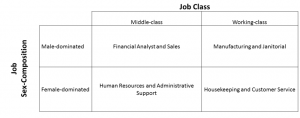

 Stephanie Coontz offers reflections on the Council on Contemporary Families brief,
Stephanie Coontz offers reflections on the Council on Contemporary Families brief, 

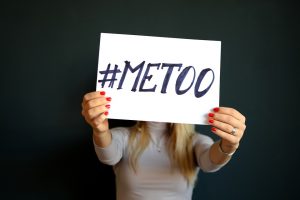
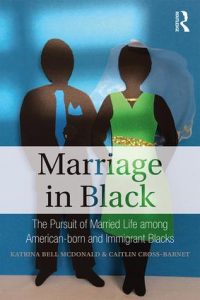
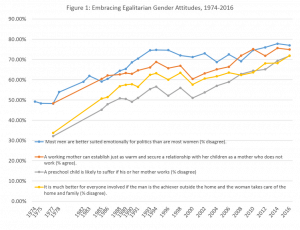
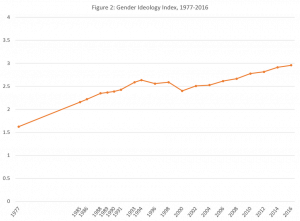
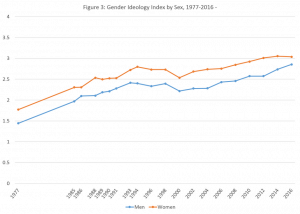
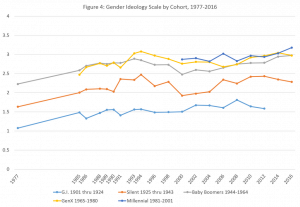
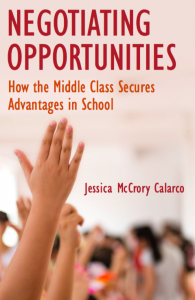 Jessica McCrory Calarco is an Assistant Professor of Sociology at Indiana University at Bloomington and recently published the book
Jessica McCrory Calarco is an Assistant Professor of Sociology at Indiana University at Bloomington and recently published the book